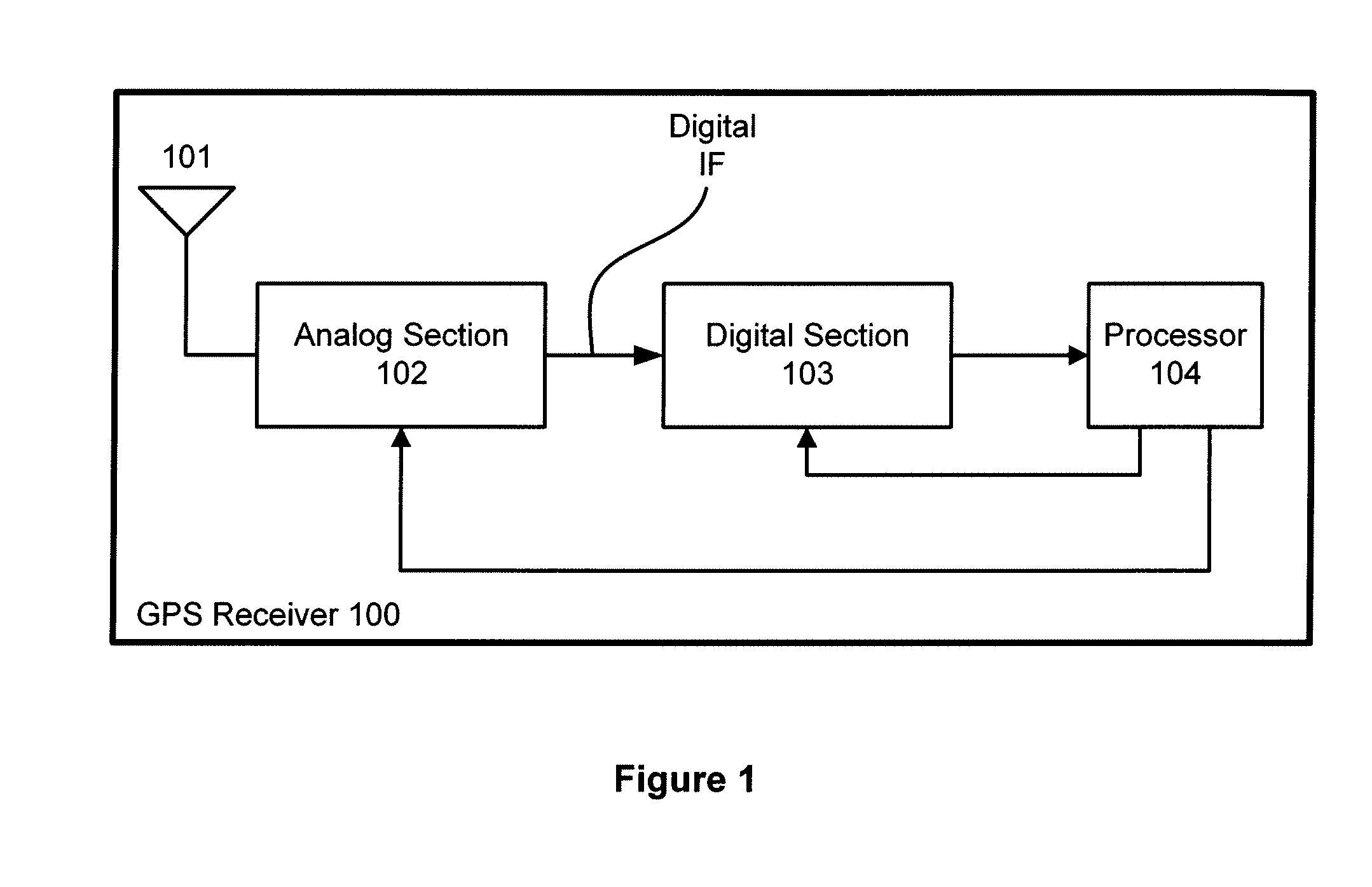High Sensitivity GPS Receiver
a gps receiver, high-sensitivity technology, applied in the field of satellite navigation receivers, can solve the problems of low-cost gps receivers that typically receive, many impediments, and satellite signals that always have some doppler-induced distortion
- Summary
- Abstract
- Description
- Claims
- Application Information
AI Technical Summary
Benefits of technology
Problems solved by technology
Method used
Image
Examples
Embodiment Construction
[0035]FIG. 1 is a conceptual diagram of a GPS receiver 100. GPS receiver 100 includes, without limitation, an antenna 101, an analog section 102, a digital section 103, and a processor 104. GPS satellite signals are received by antenna 101 and are coupled to an input of analog section 102. Analog section 102 processes the GPS satellite signals and produces a digital intermediate frequency (IF) signal by sampling the GPS satellite signal with an analog to digital converter (ADC). In one embodiment, the sample rate may be approximately 16 mega-samples per second (Ms / s). The digital IF signal is coupled to the input of digital section 103. Digital section 103 uses the digital IF signal to acquire and track satellites from within the GPS satellite constellation by producing acquisition and tracking data that is coupled to processor 104. Processor 104 may be a central processing unit CPU, a microprocessor, a digital signal processor, or any other such device that may read and execute pro...
PUM
 Login to View More
Login to View More Abstract
Description
Claims
Application Information
 Login to View More
Login to View More - R&D
- Intellectual Property
- Life Sciences
- Materials
- Tech Scout
- Unparalleled Data Quality
- Higher Quality Content
- 60% Fewer Hallucinations
Browse by: Latest US Patents, China's latest patents, Technical Efficacy Thesaurus, Application Domain, Technology Topic, Popular Technical Reports.
© 2025 PatSnap. All rights reserved.Legal|Privacy policy|Modern Slavery Act Transparency Statement|Sitemap|About US| Contact US: help@patsnap.com



